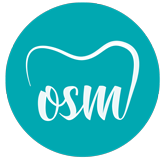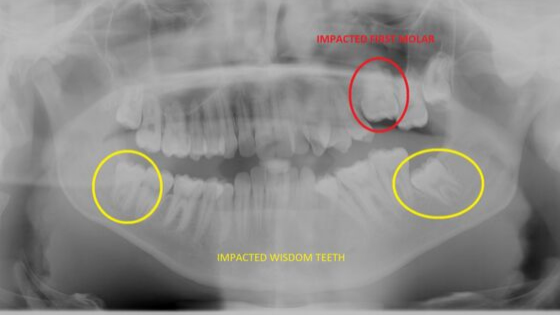Usually the first time you hear about having an impacted tooth is at the dentist. At first you may not realise it is impacted as it isn’t causing any pain or affecting the bite. However, if left untreated, it can lead to complex issues that become even more difficult to treat. Therefore, if your dentist or orthodontist has mentioned that you have an impacted tooth, it is very important to manage it appropriately. The information below may help you better understand the diagnosis and treatment options.
What is an impacted tooth?
An impacted tooth is any tooth that doesn’t come through into the mouth when it is expected. Most people have all their adult teeth (except wisdom teeth) come into the mouth by the age of 13 or 14. It is important to see an orthodontist if there is delay in the eruption of any of the adult teeth so that they can help find out the cause of the impaction and manage it appropriately.
Teeth may become impacted due to several reasons, such as severe crowding, trauma to the baby tooth or genetics. Sometimes the impaction is completely inexplicable. Although any tooth can become impacted, third molars (commonly known as wisdom teeth) and canines are often impacted. This may be because there isn’t enough room or because they have gone off course.
How to tell if you or your child has an impacted tooth?
Because some impacted teeth are asymptomatic, it is very hard to tell if you have an impacted tooth. Often if a baby tooth is still present well after it should have fallen out, this may indicate that there is an impaction. Usually an x-ray will be taken and the impacted tooth will be identified. At this stage, once the tooth has been identified, the appropriate treatment can be undertaken.
What are the risks of an impacted tooth?
Not managing an impacted tooth can cause several problems. The tooth itself can end up developing a cyst which will cause severe pain and require extraction of the tooth. Also, the impacted tooth can cause damage to the teeth next to it by putting pressure on the roots of the adjacent teeth. In some severe cases, the adjacent teeth may become loose and fall out.
How can orthodontic treatment help an impacted tooth?
The best orthodontic care will need to be individualised for each person and each impaction. This may be dependent on your age, the angle of the impacted, the severity of the crowding and other factors.
If the impaction is diagnosed early enough, simply removing the baby tooth may allow the impacted tooth to come into the right space. Otherwise space can be made using braces or an expander. The impacted tooth may come through on its own if there is enough space.
Occasionally, the impacted tooth needs to be exposed and braced so that it can be brought into line. Usually braces are required on all the teeth to complete this. If the impaction is very severe and the tooth is in the complete wrong positon, it may need to be removed.
As each case is very individual, it is best to see specialist orthodontist for a consultation. They will be able to give you the most appropriate information for your impacted tooth and form the best treatment plan for you. Book a free consultation with Orthodontic Specialists of Melbourne today.
Information adapted from Australian Society of Orthodontics website.

